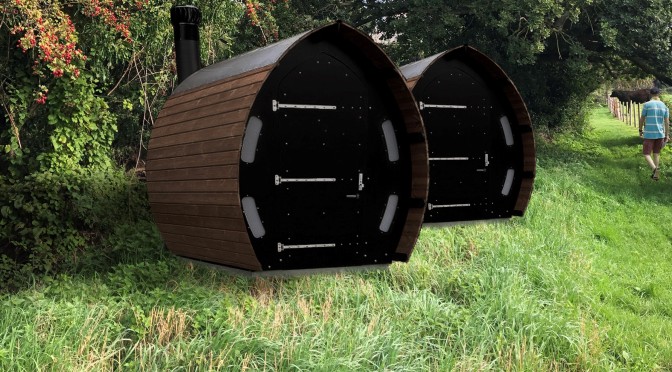Now that the barn has undergone its urgent repairs, the Trust are turning their attention to fundraising for the second phase of the project to bring waterless eco toilets to the site. We know that this will be a real enabler in terms of future community use and sustainability of the Barn.
Spend a penny
If you spent a penny in the year 1500 (when Henry 7th was king) you’d be spending over £5 today, so we would love it if you would donate at least £5 to the ‘Spend a Penny’ campaign that will enable us to install the high quality environmentally-friendly loos that the Tithe Barn needs to make it an even better place to visit, hire and enjoy. The more you can contribute, the sooner we can have these wonderful facilities in use. You can donate right now on our Total Giving page: https://www.totalgiving.co.uk/appeal/TitheBarnTrust_spendapenny
What’s a Kazubaloo?
The Kazubaloo is an alternative to a composting toilet which doesn’t require any water, electricity or chemicals. They are self-contained, low maintenance and are suitable for high capacity use, which makes them ideal for the Barn and its future uses.
How many are you hoping to install?
Our aim is to install 2 toilets to provide the capacity required for the barn.
Where are they going?
Our new toilets will be installed along the path to the barn, near the oak tree. The system used in the toilets require specific site conditions and we felt that this location is best for both the toilets and to protect the setting of the Tithe Barn.
Are they accessible?
The Kazubaloo is very similar to a standard toilet. The model we are proposing to install is fully accessible.
How do they work?
The toilets primarily operate using solar and wind energy. Solids and liquids are separated through the use a basket which catches the solid waste and allows liquids to drain away into a tank below. The chimney at the back of the Kazubaloo is warmed by the sun, causing the air inside to also heat up, which then rises. At the top of the chimney is an extractor which will rotate in the breeze. The combination of the extractor and the warm air intensifies the airflow through the unit. Fresh air is drawn down through the toilet pan which stops any odours from escaping. The constant airflow through the toilet dehydrates the waste, reducing it by up to 90%.
When will they be installed?
This will be subject to raising the required funds and achieving planning consent.
How much will they cost?
We are hoping to raise £30,000 through our “Spend a Penny” campaign which will cover the costs of the toilets and their installation.
Does it smell?
Not at all. The key is the separation of the liquids and solids and the airflow. By separating the waste inside the Kazubaloo System and ensuring that a near continuous flow of air passes over the separated waste the system is designed to ensure that decomposition is an aerobic process. The products of aerobic decomposition are odourless and non-toxic.
What happens to the waste material when it’s cleaned out of the toilet?
The dried waste is removed from the toilet in a basket, having spent roughly a year in the system drying out. The inert and odourless dry waste is transferred in the baskets, using the precaution of gloves, into a secondary composting process to allow the waste to be composted fully. This generally takes the form of a compost bin dedicated to the waste. However, the reality is, that the compost bin will fill up very slowly and therefore will not need emptying for a considerable time.
What if there is no sun or wind?
A waterless toilet provides advantageous conditions for evaporation and it is extremely rare that zero evaporation will occur. In any event, if there is waste in the system, then microbiological activity will continue and the waste will continue to break down. If a period of prolonged darkness and lack of wind occurred and waste was continually added to the system, then they would need to be manually emptied, but it’s somewhat unlikely.
Do they work in cold wet climates?
Waterless toilets do work in cold wet climates, the amount of usage a toilet gets should be matched to the climate. In colder climates the toilets should be used less and in warmer climates the usage can be increased.
What about toilet paper?
This will break down alongside the human waste.
What happens if people throw rubbish into the toilet?
Nothing. The Kazubaloo will continue to function as normal in spite of drinks cans, sanitary towels, plastic cutlery, nappies and so on being thrown into the system. They will be retrieved at the end of the cycle and disposed of in the normal way. However, we would rather people didn’t use our new toilets as a bin and use the bins that will be provided, or take it home.
How is it maintained?
After an initial assessment of use, aside from the usual cleaning, the toilets will only require maintenance once or twice a year, depending on usage. “Emptying” the toilets would usually only be a five minute job.
.

